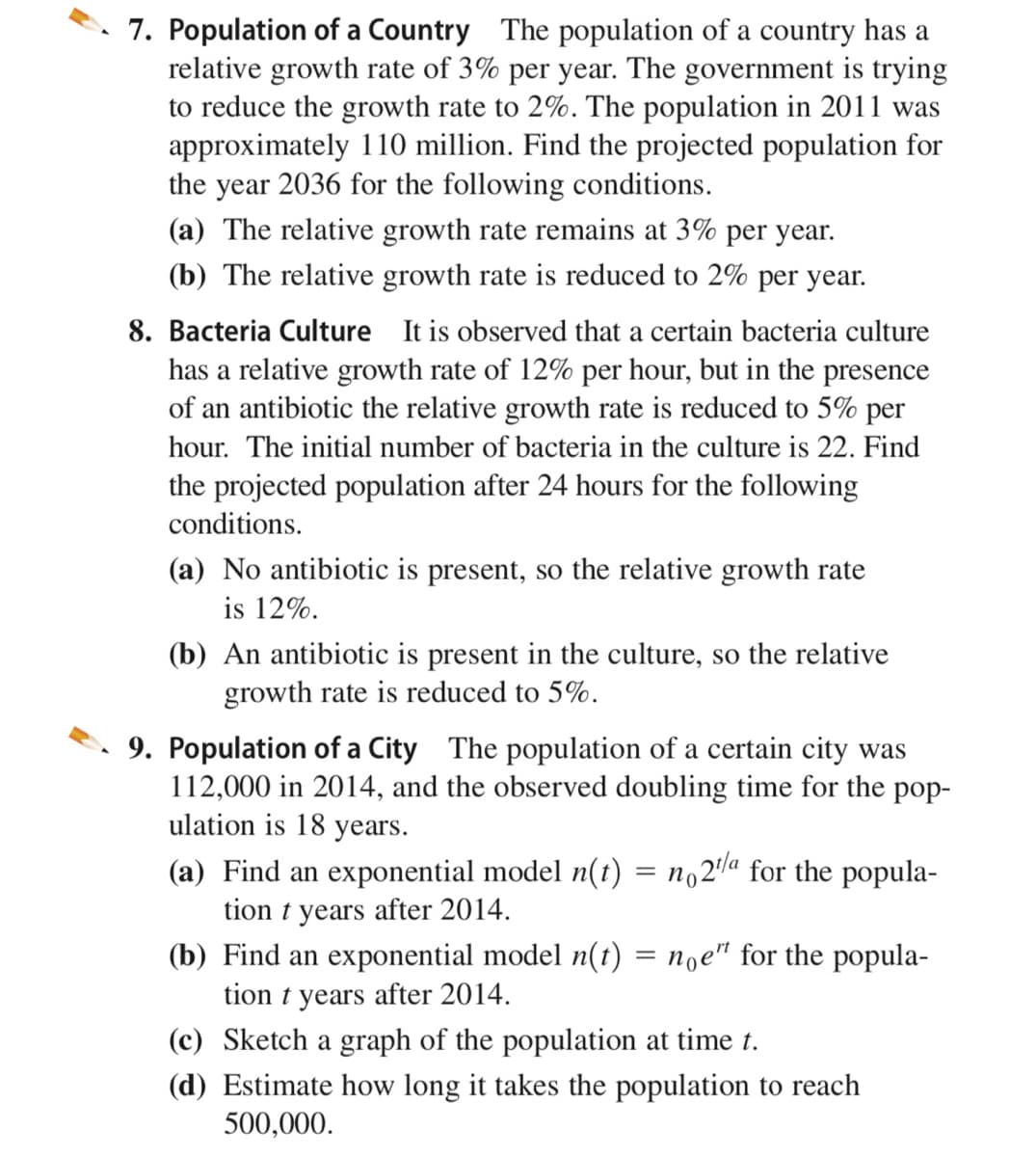7. Population of a Country The population of a country has a relative growth rate of 3% per year. The government is trying to reduce the growth rate to 2%. The population in 2011 was approximately 110 million. Find the projected population for the year 2036 for the following conditions. (a) The relative growth rate remains at 3% per year. (b) The relative growth rate is reduced to 2% per year.
7. Population of a Country The population of a country has a relative growth rate of 3% per year. The government is trying to reduce the growth rate to 2%. The population in 2011 was approximately 110 million. Find the projected population for the year 2036 for the following conditions. (a) The relative growth rate remains at 3% per year. (b) The relative growth rate is reduced to 2% per year.
Linear Algebra: A Modern Introduction
4th Edition
ISBN:9781285463247
Author:David Poole
Publisher:David Poole
Chapter3: Matrices
Section3.7: Applications
Problem 44EQ
Related questions
Topic Video
Question
Sec4.6:#7

Transcribed Image Text:7. Population of a Country The population of a country has a
relative growth rate of 3% per year. The government is trying
to reduce the growth rate to 2%. The population in 2011 was
approximately 110 million. Find the projected population for
the year 2036 for the following conditions.
(a) The relative growth rate remains at 3% per year.
(b) The relative growth rate is reduced to 2% per year.
8. Bacteria Culture It is observed that a certain bacteria culture
has a relative growth rate of 12% per hour, but in the presence
of an antibiotic the relative growth rate is reduced to 5% per
hour. The initial number of bacteria in the culture is 22.
the projected population after 24 hours for the following
ind
conditions.
(a) No antibiotic is present, so the relative growth rate
is 12%.
(b) An antibiotic is present in the culture, so the relative
growth rate is reduced to 5%.
9. Population of a City The population of a certain city was
112,000 in 2014, and the observed doubling time for the pop-
ulation is 18 years.
(a) Find an exponential model n(t) = no2la for the popula-
tion t years after 2014.
(b) Find an exponential model n(t) = noe" for the popula-
tion t years after 2014.
(c) Sketch a graph of the population at time t.
(d) Estimate how long it takes the population to reach
500,000.
Expert Solution
This question has been solved!
Explore an expertly crafted, step-by-step solution for a thorough understanding of key concepts.
This is a popular solution!
Trending now
This is a popular solution!
Step by step
Solved in 3 steps

Knowledge Booster
Learn more about
Need a deep-dive on the concept behind this application? Look no further. Learn more about this topic, calculus and related others by exploring similar questions and additional content below.Recommended textbooks for you

Linear Algebra: A Modern Introduction
Algebra
ISBN:
9781285463247
Author:
David Poole
Publisher:
Cengage Learning

Algebra & Trigonometry with Analytic Geometry
Algebra
ISBN:
9781133382119
Author:
Swokowski
Publisher:
Cengage

Functions and Change: A Modeling Approach to Coll…
Algebra
ISBN:
9781337111348
Author:
Bruce Crauder, Benny Evans, Alan Noell
Publisher:
Cengage Learning

Linear Algebra: A Modern Introduction
Algebra
ISBN:
9781285463247
Author:
David Poole
Publisher:
Cengage Learning

Algebra & Trigonometry with Analytic Geometry
Algebra
ISBN:
9781133382119
Author:
Swokowski
Publisher:
Cengage

Functions and Change: A Modeling Approach to Coll…
Algebra
ISBN:
9781337111348
Author:
Bruce Crauder, Benny Evans, Alan Noell
Publisher:
Cengage Learning